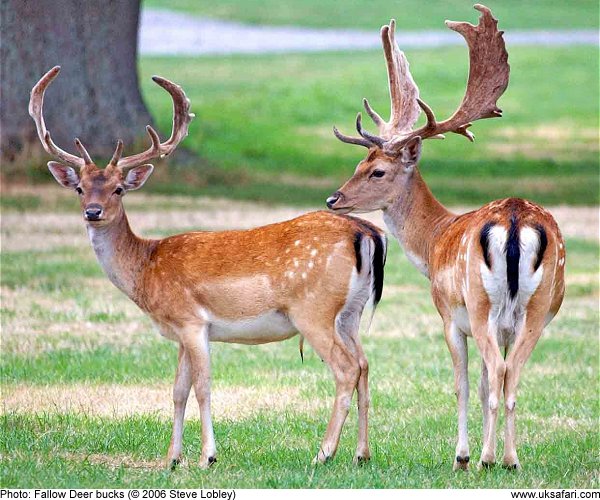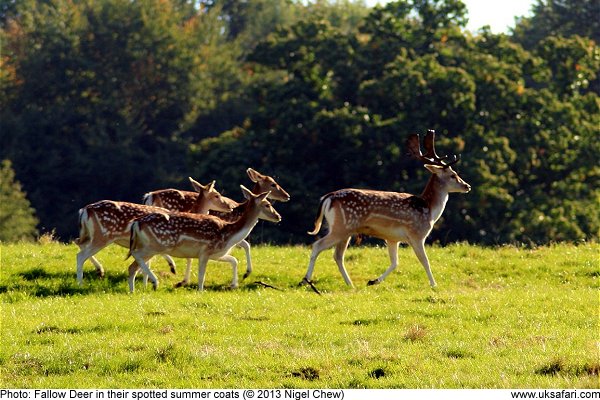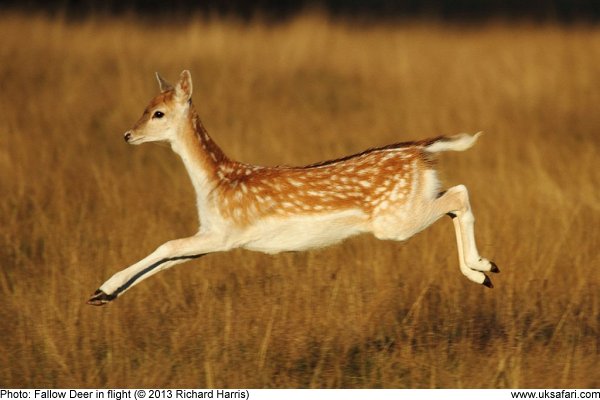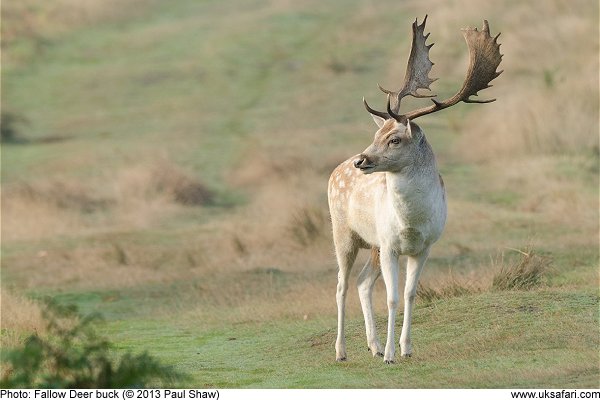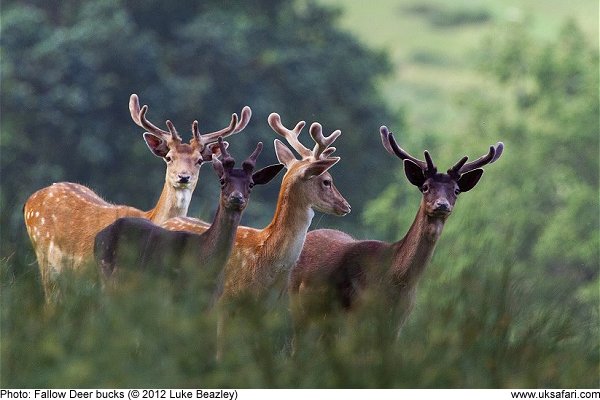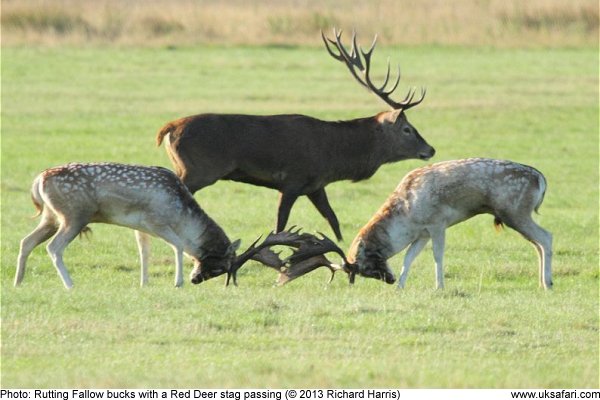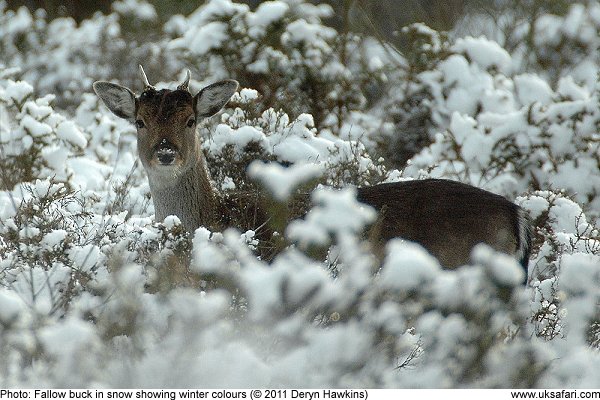 Quick Facts
Quick Facts
Scientific name: Dama dama
Size: Males (bucks) and females (does) grow to about 95cm. The males weigh between 50 and 95kg, while the females weigh between 40 and 55kg.
Distribution: Found wild in many forest areas, including Epping Forest, The New Forest, and The Forest of Dean, as well as many of the larger parks in the UK
Months seen: All year round
Habitat: Forests, woods and parkland
Food: Grass and low growing vegetation, as well as leaves on trees. Tress where the deer live have a perfectly flat bottom to their branches, about two metres from the ground, which is the maximum height the deer can reach while standing up on their hind legs
Special features: Fallow deer graze mostly in the mornings and evenings, and rest during the daytime under the shade of trees. Their fur in the summer is an orange-brown with some white spots along the flanks. In winter the fur darkens to a greyish-brown and the spots are barely visible. The tail end has a round patch of white fur with a black border. The tail is black, so is very prominent against the white fur.
The males can be recognised by the large flat areas on the antlers which are unique to the fallow deer. Deer antlers are thought to be the fastest growing living tissue in the animal kingdom. The antlers are used when fighting with other males over territory and control of females. Antlers are normally shed between April and May.
Some deer which are kept in public parks have become quite tame and will come fairly close to picnickers looking for scraps of food.
 Related Pages
Related Pages

 Popular Pages
Popular Pages
Amphibians, Bats, Badgers, Beetles, Birds, Birds of Prey, Bumble Bees, Butterflies, Caterpillars, Creepy-Crawlies, Deadly Spiders, Dolphins, Dragonflies, E-Postcards, False Widow Spiders, Free Newsletter, Frogs, Fungi, Garden Spiders, Glow-Worms, Grey Squirrels, Hedgehogs, House Spiders, Ladybirds, Mammals, Marine Mammals, Moths, Owls, Reptiles, Spiders, Toads, Trees, Wildlife Hospitals
Copyright © 2020 G. Bradley UK Safari. All rights reserved | About Us | Links | Contributors


 Fallow Deer
Fallow Deer